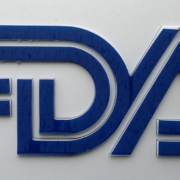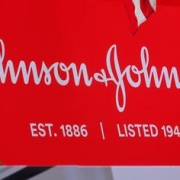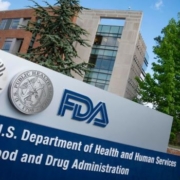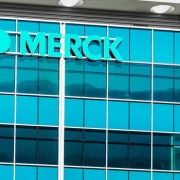Biologics projected to keep gaining ground in cancer therapeutics market
Biologics projected to keep gaining ground in cancer therapeutics market
Published: Nov 22, 2023
By Patience Asanga
BioSpace
Analysts at GlobalData report that the oncology drug market is tilting toward biologics, and that the total market for these drugs will continue to grow rapidly, reaching $786 billion by 2029. This tremendous growth is largely due to biologics’ effectiveness in treating rare solid tumors, according to the report.
In contrast to chemically synthesized drugs such as small molecules, biologics are bioengineered from a variety of starting points such as proteins or living cells. Although small molecules have been the dominant type of therapy on the market for decades, the rise of biologics is changing this. In 1998, Rituximab, the first approved biologic drug, was introduced into the oncology market. Many more biologics have followed over the years, not only for cancer but for several other diseases as well.
The total market value for biologics went from $124 billion in 2009 to $418 billion in 2022. Small molecules generated $354 billion last year, the GlobalData report found. This margin is forecast to expand over the years, with biologics expected to generate $786 billion and small molecules $548 billion in 2029. GlobalData reports that monoclonal antibodies alone are projected to account for more than 40% of the total 2029 biologics revenue.
Jasper Morley, a drugs intelligence analyst at GlobalData, noted that within the solid tumor indication, the proportion of biologics drugs is already much higher than that of small molecules. The report shows that biologics currently account for 20% of all drugs, 51% of oncology drugs and 64% of oncology drugs targeted at solid tumors.
Among the biologics topping the oncology market is Kite Pharma’s Yescarta, a CAR T cell therapy. Approved in 2017 as a treatment for non-Hodgkin lymphoma, Yescarta is predicted to generate sales of about $2.5 billion in 2029 alone. Warner Biddle, global head of commercial at Kite (a subsidiary of Gilead), said that although cell therapy is still a nascent technology and a relatively small part of the overall market, the market potential for cell therapies like Yescarta is much larger than current sales figures indicate. “When we do our market research . . . we know that we are treating, in the U.S. at least, roughly two out of ten [eligible] patients,” Biddle explained. In Europe, four or five out of every ten eligible patients are treated with Yescarta. Katherine Rubino, a partner at the law firm Caldwell who advises life science companies, noted that there are many indications where CAR T cells are gearing up to see a boom in the coming years.
Morley attributes the success of biologics in the global market to their effectiveness against difficult rare cancers that small molecules cannot treat. He said several tumors exhibit rare mutations that make it challenging for small molecules, which are limited in scope, to treat. Biologics, however, are designed to handle such peculiarities. “Biologics are the dominating molecule type within solid tumors as they possess a variety of mechanisms to treat solid tumors, which small molecules do not possess,” he said.
Rubino observed that another driver of growth for the biologic oncology market is the increased incidence of cancer. According to a report from the International Agency for Research on Cancer, cancer cases rose from 18.1 million in 2018 to 19.3 million in 2020, with solid tumors such as breast cancer remaining the most common cancer type worldwide. Rubino said that the growing number of cancer cases is driving many biopharmaceutical companies in search of new treatment options, and many of them have come to trust the ability of biologics to target specific tumors.
“It’s not surprising that within the oncology market, specifically solid tumors, biologics are starting to dominate,” said Alex Watt, a principal research analyst for GlobalData who specializes in drug pricing. Watt said the report bears out current market trends. “We’ve been seeing more and more biologics entering the market for various indications, not just oncology,” she noted. Biddle echoed this, saying, “There is an opportunity to use CAR T cell therapies potentially in areas outside of oncology, like autoimmune diseases, and if that happens, that will expand this market even further and further generate potential in this space.”
For example, the FDA announced the approval of Tezspire for the treatment of asthma in 2021. Last year, the regulator approved Novo Nordisk’s Tresiba biologic for diabetes, and this year, AbbVie’s oral biologic Rinvoq (upadacitinib) was approved for moderate to severely active Crohn’s disease.
Morley noted that the biologics market is changing as big pharmas that initially made generic drugs branch into the market, a practice that was alien in the early days of the industry when biologics were exclusively made by specialized companies such as Amgen.
Rubino warned, however, that the rapid growth of the biologics market might be dampened by high cost, especially in the U.S., given its lack of universal government-funded health insurance. Biologics drugs are costly to manufacture and, consequently, priced higher than small molecule drugs, making insurance companies reluctant to cover them. She suggested that the market in the U.S. could be affected if insurance companies prefer small-molecule drugs because of their affordability. “It will be interesting to see how insurance companies handle reimbursement and if they suggest using small molecules as first-line therapy in a step-wise approach to treatment,” she said.
Source: BioSpace









